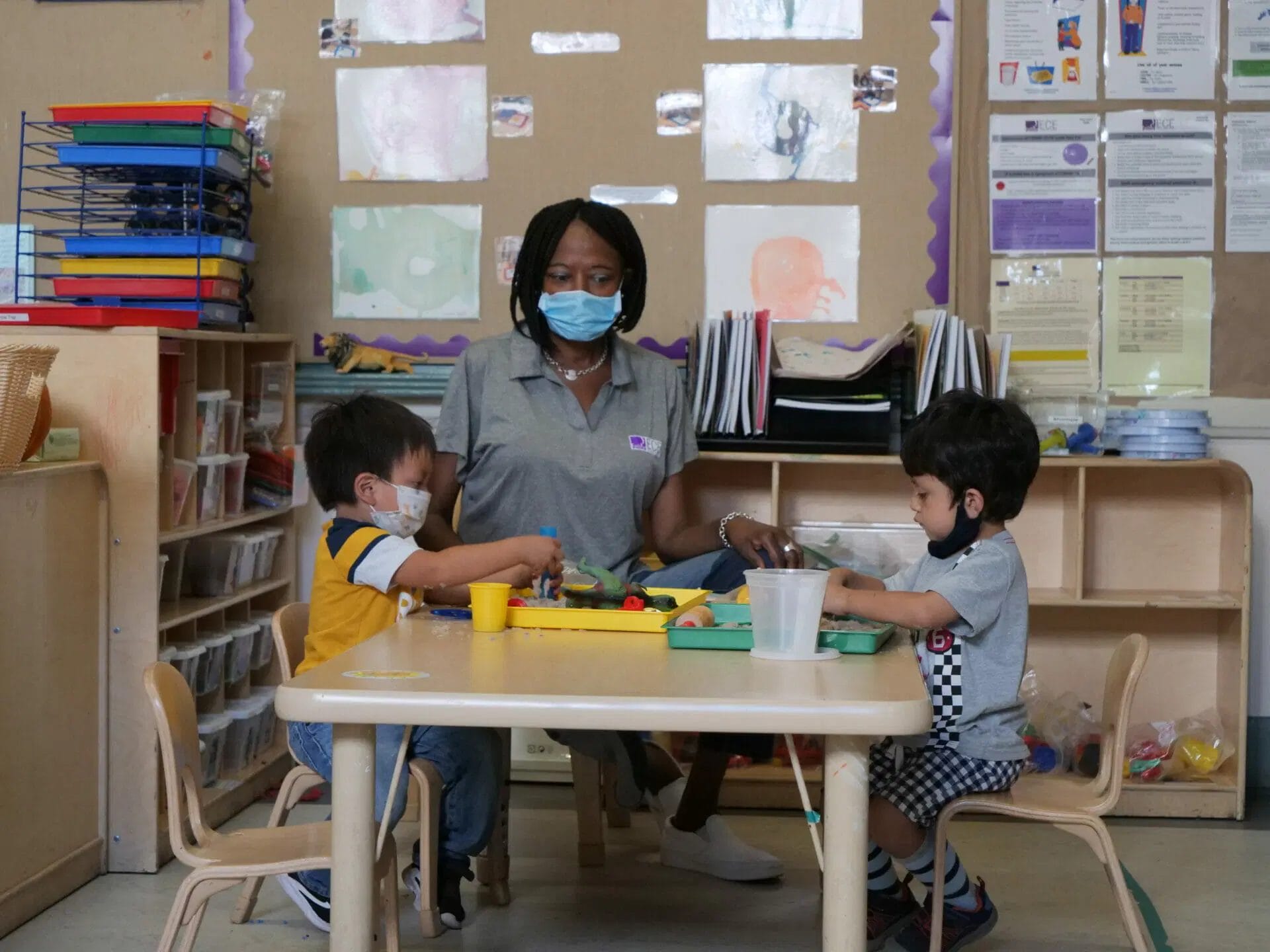For decades, low levels of public investment in this sector have kept the ECE workforce—largely women of color and immigrant women—in a grim financial bind.
During the first year of the pandemic, the majority of early educators continued to work in person—risking their health and that of their families—while K-12 schools closed for distance learning. This report reveals new details on the economic realities of life as an early educator during the COVID-19 public health crisis.
“We are certainly front line workers. We are the forgotten ones. As we engage with young children, we expose ourselves to others and take health risks every day. We deserve acknowledgement and better pay, as an industry.”
– Center Director, a Black woman in Los Angeles County with forty years of experience in early care and education
“If there were support for us providers, even loans, so I could pay the mortgage and keep my house, that would be great… I could focus on my work because my family would also be taken care of. I hope things get better, and I can continue my business. I don’t want to have to close and look for another job because I really like working with children.”
– Family Child Care Provider, a Latina woman who was born outside the United States and lives in Southern California
“I feel trapped. The job market is in free fall and I have only ever successfully worked early childhood education as a career. I would stay in the field if the pay, benefits, and protections were better. But I can’t get out of it soon enough the direction things have been heading.”
– Center Teacher, a single White woman in her forties in the Bay Area
Key Findings From the California ECE Workforce Study
- Virtually all early educators are women, the vast majority are women of color, and a substantial number were born outside of the United States. Compared to working adults in California, members of the ECE workforce tend to earn lower wages, and their economic well-being suffers as a result.
- While the majority of family child care (FCC) providers own their home—often essential to maintaining a home-based business—only 39.9 percent of center teachers are homeowners, compared to 54.7 percent of working California adults statewide.
- Around one third of family child care providers and center-based teachers require at least one form of public assistance, such as Medi-Cal.
- Food insecurity is relatively high. Roughly one third of FCC providers and center teachers report that they lack the quality or kinds of food they need. This number climbs to 39 percent for center teachers who are women of color and 42 percent for educators who are immigrants.
- Educators’ low wages leave them ill prepared for a financial shock. While the majority of early educators can find a way to cover an unexpected $400 expense, they are much less likely to be able to pay part or all of the cost outright. The majority of family child care providers (two out of three) could only manage by taking on debt.
- Working in early care and education is often hardest for younger educators and those who do not live with a partner. For instance, 17.5 percent of FCC providers under age 40 rely on food stamps, and unpartnered FCC providers are 10 percentage points more likely to worry about their routine health-care costs than partnered providers.
- Centers were more likely to close for a portion of 2020 as the result of the pandemic, largely due to broad closures by school districts and other networks of programs. While FCC programs were more likely to stay open, they faced substantial challenges in doing so. Among those that ultimately closed by late 2020, 14 percent of programs felt the change was permanent.
- Staying open for even part of 2020 required most programs to endure serious financial turmoil. Among family child care providers, more than one quarter took on credit card debt to fund operations and more than one third went without paying themselves at some point.
- Early educators working in programs with stable, subsidized funding weathered the pandemic better. Only 3 percent of directors in centers with Head Start or state-funded contracts reported a furlough, compared to 13 percent in centers without public funding.
Recommendations for Policymakers
1. Establish and fund the wage floor for early educators at the regionally assessed living wage and articulate minimum benefit standards (health insurance, paid leave, retirement).
- Compensation for center- and home-based educators should also account for job role, experience, and education levels, up to parity with similarly qualified TK and elementary school teachers.
2. Provide targeted funding and systemic changes to end disparities in the workforce that include those related to race and ethnicity, immigration status, and geography.
3. Fund direct, targeted support to family child care providers, who face unique financial hardships.
4. Prioritize stable contract-based funding arrangements for both centers and home-based providers.
- Contracts should guarantee a base funding amount—accounting for the number of publicly funded spots rather than using volatile enrollment levels—and compensate non-contact hours (i.e., paid preparation/planning time).
5. Fund and make publicly available longitudinal research on the early care and education system and workforce.
- California should include a plan to reach full participation in state workforce data systems for all members of the ECE workforce employed in school-, center- and home-based child care settings.



